
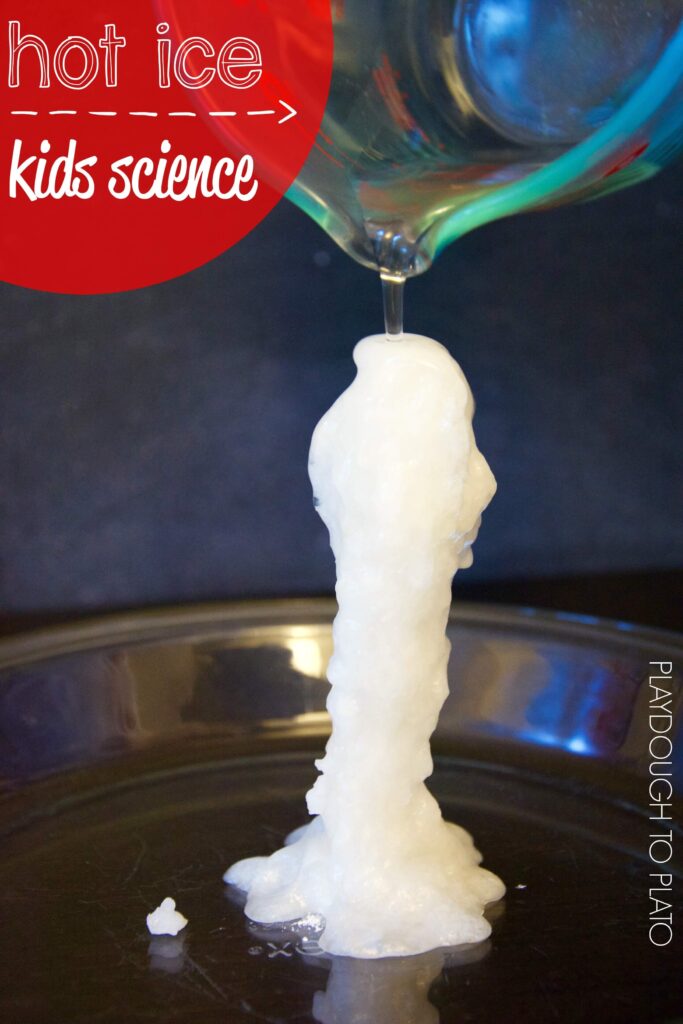
Getting Ready
For this science experiment, I first gathered a few supplies:
- 4 cups of white vinegar {acetic acid}
- 4 tablespoons of baking soda {sodium bicarbonate}
- a pot
- a glass measuring cup or mason jar {heat safe glass}
- a dish
- a spoon
Making Hot Ice
After I collected the supplies, my 3 and 5 year old took turns measuring out 4 cups of vinegar and pouring it into a medium pot.
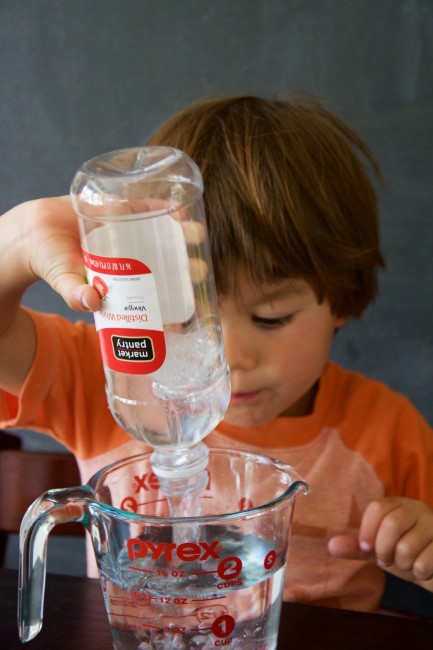
Next, I asked my volcano making experts what would happen if we added baking soda to the vinegar. “It will erupt!” they both shouted. They took turns adding 4 tablespoons of baking soda, one tablespoon at a time, to the pot.
Just as they predicted, the sodium bicarbonate and acetic acid fizzed like crazy forming sodium acetate. The key is to add the baking soda slowly so it doesn’t erupt over the edges of your pot.
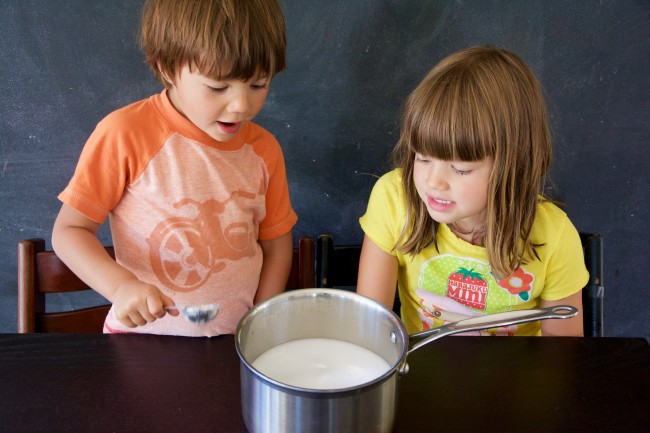
Next, we stirred the mixture until all the baking soda dissolved and stopped fizzing. “Now, how are we going to make hot ice from this?” I asked
“Freeze it,” my 5 year old replied. Actually, we needed to boil it. The sodium acetate solution as it was had too much water so we headed to the kitchen and I boiled the solution over medium low heat for a little over an hour. You’ll want to reduce the solution by about 75% or until you have about 3/4-1 cup. I could see white powdery crystals forming on the sides of the pot near the top of the solution. If you boil your solution at a higher temperature it may turn yellow-brownish but don’t worry, the experiment will still work!
Next, I poured the concentrated sodium acetate into a glass pyrex measuring cup and placed it in the fridge to cool. I then scraped a little of the dried sodium acetate powder off the inside of the pot to use later. After about 30-45 minutes, the solution was cool enough to turn into ice. I grabbed my glass dish and placed a small pile of the sodium acetate powder from the pot in the center. This would act as a seed for the crystals to start forming on.
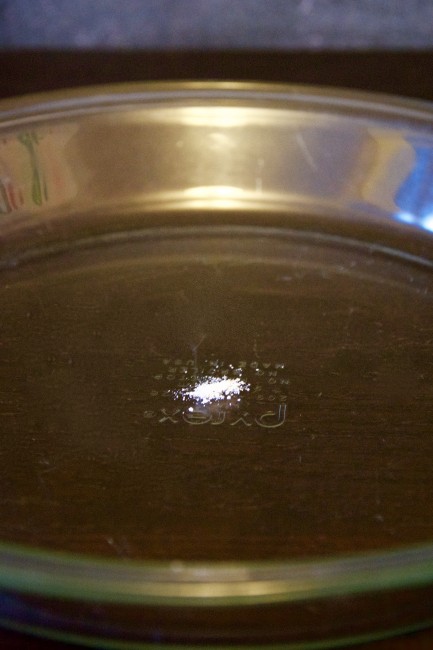
I gathered the kids and asked them what they thought happened to the solution the fridge. “It made ice,” said my 3 year old to which my 5 year old replied, “No it’s not cold enough.” I carefully took the cool solution out of the fridge and they saw it was still liquid. Any bump could start the crystallizing process in the solution so be very careful not to jar the solution.
Next, I asked what they thought would happen if I poured the liquid onto the plate with the sodium acetate powder. They thought it would just fill it up like water.
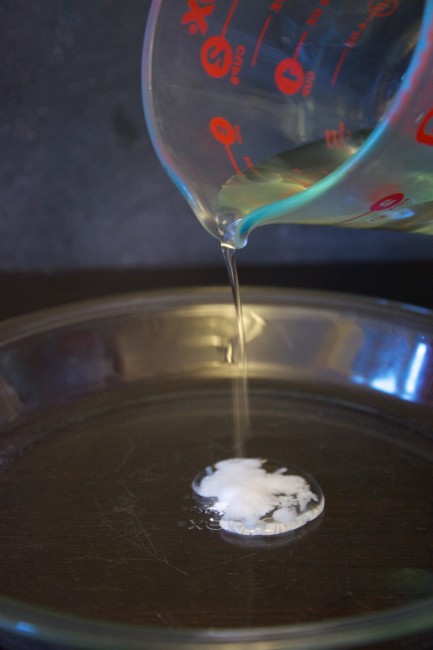
So I began pouring very slowly and instantly crystals began to form. We all gasped, it was like magic! As soon as the clear liquid hit the plate white crystals would form like tiny fireworks. I continued to pour and the liquid crystallized forming a solid as soon as it touched the growing “ice”.
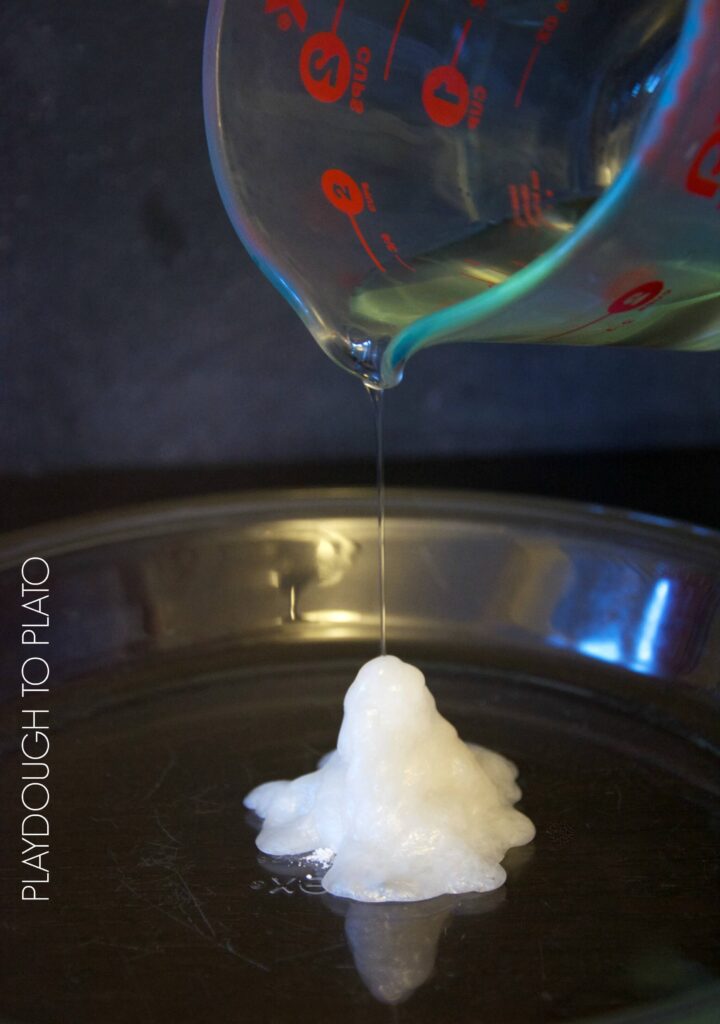
The kids wanted a really tall crystal tower so I poured as slowly as I could. It kept growing…
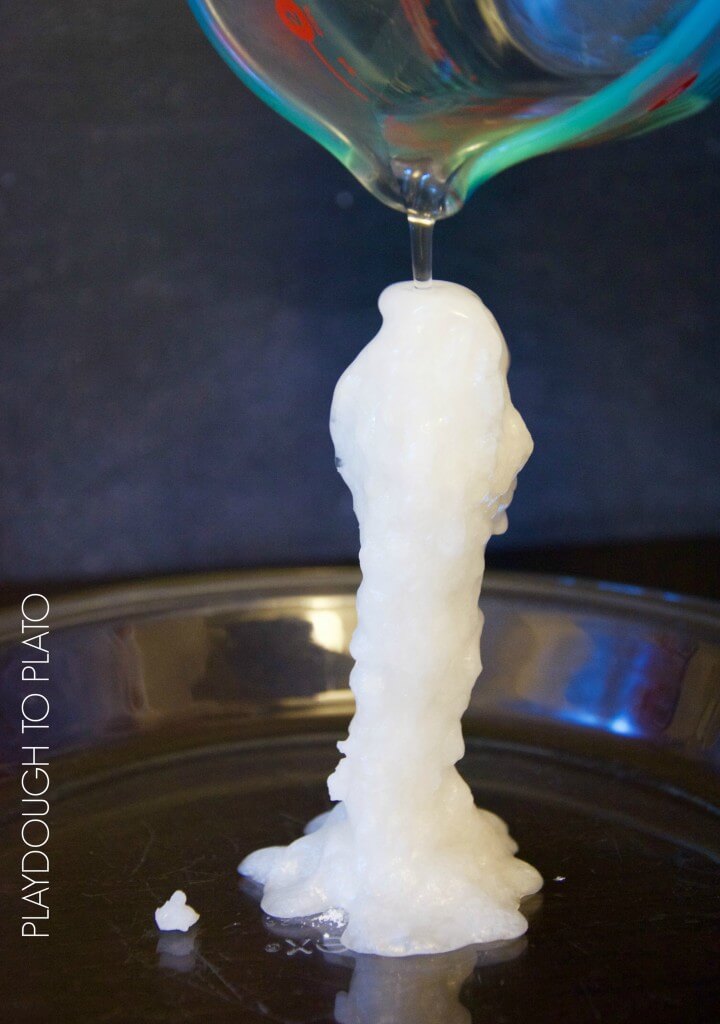
and growing. In the end it was over 6 inches tall!
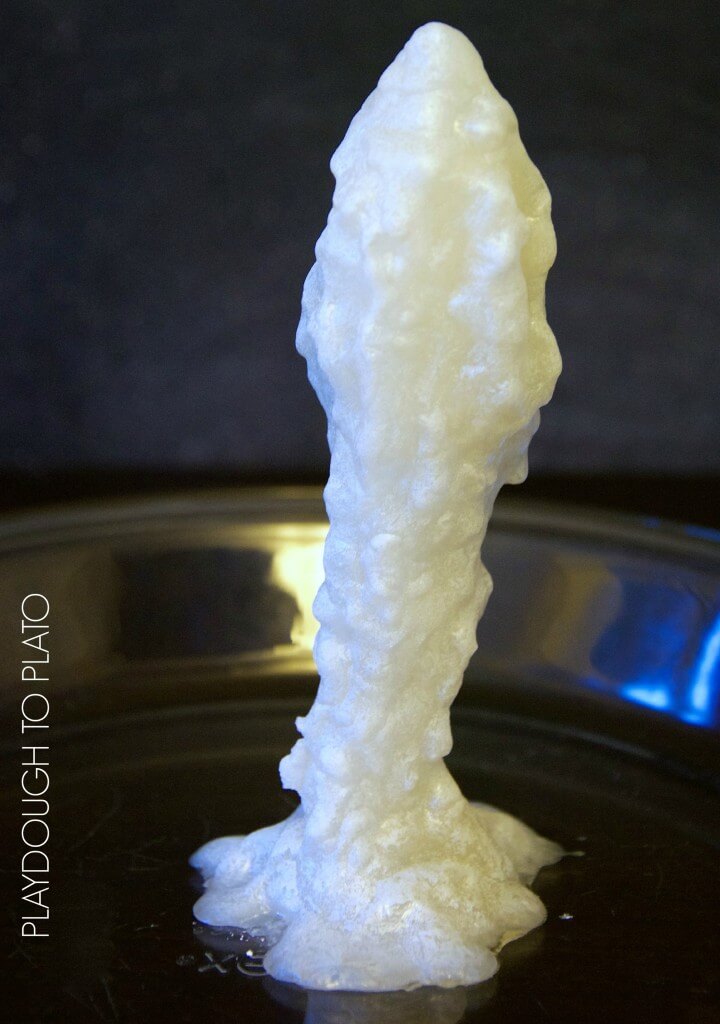
Of course we all just had to touch it. It was hard like ice but was hot!
Just a note, this form of sodium acetate while non-hazardous can irritate skin and eyes just like vinegar can. So be careful when handling the crystal. Both my kiddos ended up crumbling the crystal and didn’t have any reaction but I imagine it wouldn’t feel too good if your kiddo had a cut on his/her hands.
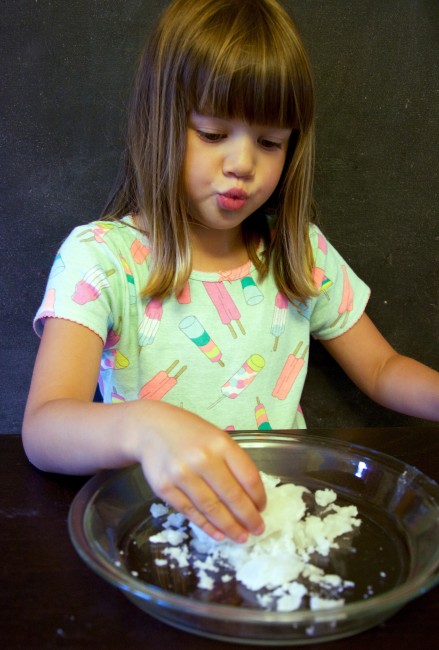
Once you are done creating and exploring the crystallized salt you can remelt it to use again and again. We ended up repeating the experiment a few more times and every time the cooled solution was ready, the kids came running with excitement!
Extensions
- After explaining nucleation ask your kiddo if they can think of any other processes that being with nucleation {hint: rock candy, borax crystals, clouds, carbon dioxide gas in soda}
- Ask you kiddo if they can think of other reactions that release heat {hand warmers, burning candle}
- Try adding a drop of food color to see if you could make colored crystals.
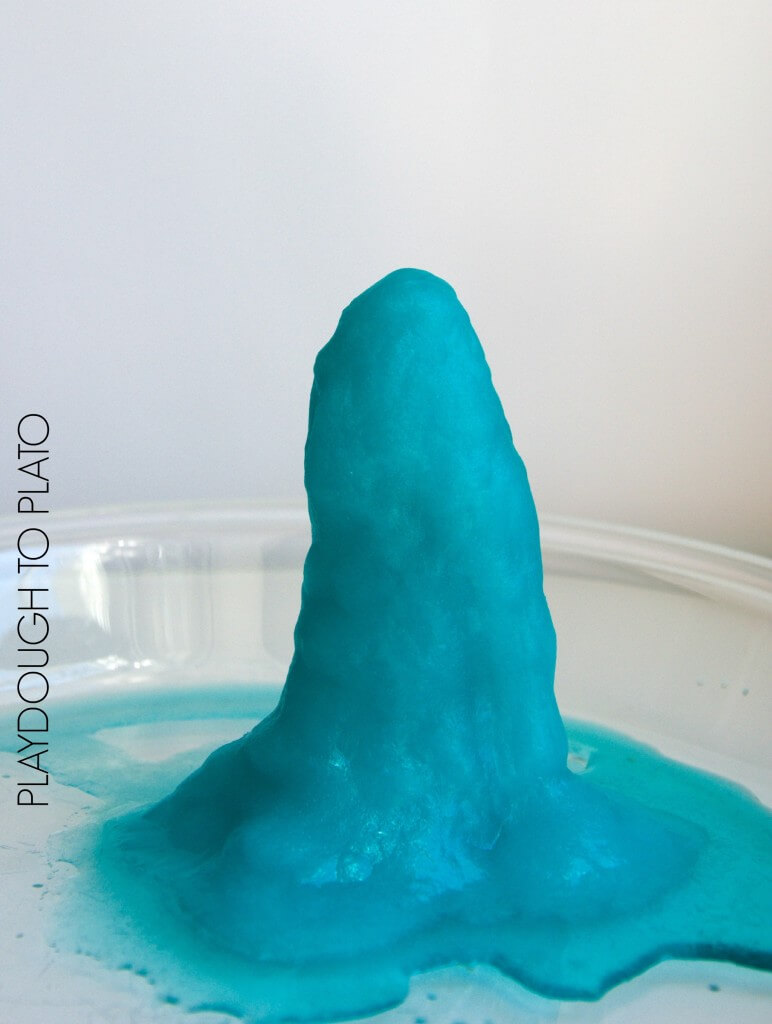
It worked, but as you can see from the water puddle at the bottom of the “ice”, we didn’t boil enough water off. When we touched the “ice” it was barely warm instead of hot like our earlier ones and was a little more slushy like when smooshed.
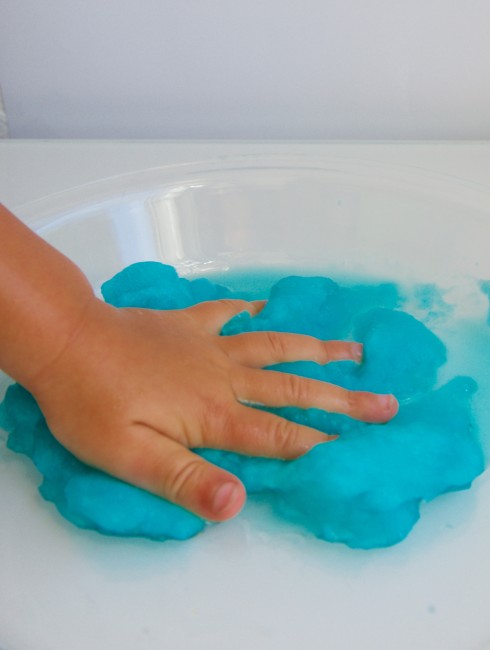
The Science Behind Hot Ice
The sodium acetate solution in the refrigerator is what is called a supercooled liquid. That means the sodium acetate is in liquid form below its usual melting point. Once you touch, bump, or add a small crystal not the liquid crystallization will begin and the liquid will change to a solid.
When the molecules in the solute {sodium acetate} are in a solution they normally are surrounded by solvent {water} molecules. Occasionally, a few solute molecules will bump into each other and stick together for a little while but eventually break apart.
If enough solute molecules stick together, they can overcome the forces in the solvent that would normally break the solute molecules apart. Once this happens, this clump of solute molecules serves a place, or nucleation site, for other solute molecules to cling to and the crystallization process takes off.
The sodium acetate powder we placed on the plate acted as a nucleation site or seed for the dissolved sodium acetate in the solutions.
The crystallizing sodium acetate releases energy in the form of heat and is an example of an exothermic process. Sodium acetate is often used in hand warmers as it release heat when crystallizing!
The Super Cool Science Kit
Grab our Super Cool Science Kit packed with 30 of our favorite science experiments for kids PLUS a corresponding science journal to keep track of their results.
Original article and pictures take http://www.playdoughtoplato.com/kids-science-experiment-hot-ice/ site
Комментариев нет:
Отправить комментарий